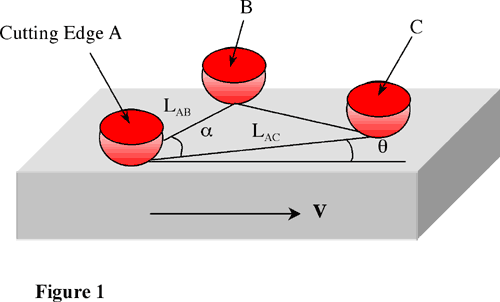Molecular Dynamics Analysis of Nano-Wear of Monocrystalline Silicon under Multi-Asperity Sliding
School of Aerospace, Mechanical & Mechatronic Engineering (J07), The University of Sydney,
Sydney, NSW 2006 AUSTRALIA
This is an abstract
for a presentation given at the
Ninth
Foresight Conference on Molecular Nanotechnology.
There will be a link from here to the full article when it is
available on the web.
When two surfaces are in contact sliding, many surface asperities will be involved in the interaction. The subsurface damage introduced by one asperity may change the properties of the material in the neighbourhood of the local contact zone and this, in turn, may influence the subsequent sliding behaviour among the other asperities. In their previous studies, the authors� research team investigated the nano-wear mechanisms of a monocrystalline silicon under the sliding of a single asperity. The purpose of the present work is to examine the effect of sliding under multi-asperities.
The model consists of three rigid asperities, A, B and C, sliding on a smooth silicon surface. Their relative positions and orientations are defined by their distances, LAB and LAC, and relative angles with respect to the sliding direction, a and q. Three interesting cases are especially analysed. These are (1) a = q = 0° with LAB < LAC, representing a repeated single-asperity sliding so that the effect of residual surface roughness and subsurface damage can be understood; (2) a = 0° and q = 90° with LAB = LAC, standing for the interaction of two parallel asperities; and (3) a = 90° and q = 0°, indicating the case with a repeated single-asperity sliding coupled with an interaction from the third asperity.

It is found that the general mechanisms of wear of silicon specimen under all the asperity configurations are the same as those described by Zhang and Tanaka [1, 2] considering only a single asperity. That is, as the penetration depth of the asperity increases, the mechanism of wear progresses from no-wear to adhering, ploughing and finally cutting. Deformation without wear happens at an extremely small penetration depth when the atomic lattice of silicon deforms purely elastically. By increasing the penetration depth, adhering takes place. Some surface atoms adhere to the asperity surface and move together with it to cause wear. When the penetration depth further increases, ploughing, characterised by an atomic cluster being pushed to move with the asperity, is observed. Finally cutting occurs upon further increment in the penetration depth, characterized by chip formation.
By considering the coordination number of silicon atoms. It appears that the transformation mechanism is similar to that of nano-indentation [3, 4]. Diamond cubic silicon first transforms into its b-silicon phase and then upon the removal of stresses, the b-silicon transforms into an amorphous phase. This explains the trail of subsurface amorphous silicon in the damaged zone behind each sliding asperity. The mechanism of phase transformation can be deduced from the coordination numbers of atoms near the regions beneath the asperities.
When the first asperity has created a damaged layer, the material will deform differently under the subsequent sliding. A thin amorphous layer always remains on the silicon surface. There is also an absence of dislocations when the depth of asperity penetration is small. It is also found that the forces experienced by individual asperities differ and are dependent on their relative positions. The results suggest that micro-structural changes in silicon due to the initial sliding affect the subsequent deformation over a damaged region.
References
- L. C. Zhang and H. Tanaka, Atomic scale deformation in silicon monocrystals induced by two-body and three-body contact sliding, Tribology International, 31, (1998) 425-433.
- L. C. Zhang and H. Tanaka, Towards a deeper understanding of friction and wear on the atomic scale: a molecular dynamics analysis, Wear, 211, (1997) 44-53.
- W C D CHEONG and L. C. ZHANG, Molecular dynamics simulation of phase transformation in silicon monocrystals due to nano-indentation, Nanotechnology 11 (3), (2000)173-180.
- D. L. Callahan and J. C. Morris, The extent of phase transformation in silicon hardness indentations, J. Mater. Res. 7 (1992) 1614-1617.
Abstract in RTF format 22,083 bytes
*Corresponding Address:
Liangchi Zhang
School of Aerospace, Mechanical & Mechatronic Engineering (J07), The University of Sydney
Sydney, NSW 2006 AUSTRALIA
phone: +61 +2 9351 2835
fax: +61 +2 9351 7060
email: [email protected]
http://nt-542.mech.eng.usyd.edu.au/
|